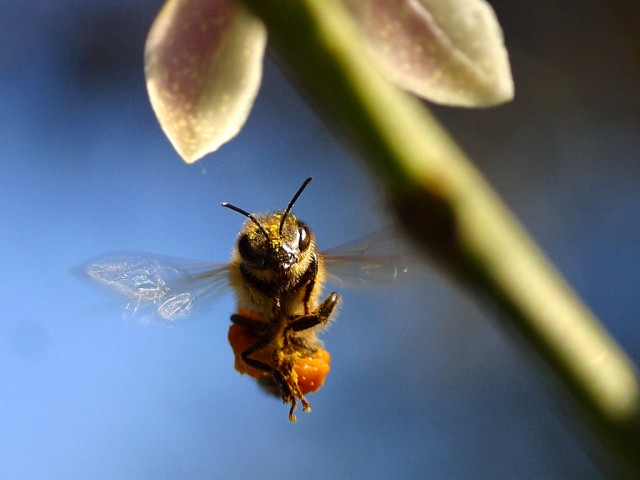
Apis mellifera, the western honeybee, is big business; the pollination services the bees provide to US agriculture are valued at roughly $14 billion. Unfortunately, bees the world over are suffering from colony collapse disorder (CCD), in which worker bees go out foraging and then disappear instead of returning to the hive and tending to the queen like they are supposed to. The causes of CCD are not clear, but pathogens, parasites, and pesticides have all been implicated. Neonicotinoids, a class of pesticides that have been shown to alter bees’ navigation, foraging, communication, and reproduction, have just been banned in Europe in an attempt to help the bees.
New research suggests yet another potential contributor to CCD. The problem? We’ve been stealing the bees’ honey and instead feeding them high fructose corn syrup. The problem isn't so much the fructose as the absence of chemicals in the honey.
Bees are exposed to a huge variety of plants because they gather nectar from the spring through the fall. The honey they make from these diverse nectar sources varies according to locality (leading to the unsubstantiated belief that eating local honey can alleviate seasonal hay fever). And bees’ “immune systems”—detoxification enzymes used to rid the body of foreign chemicals, like pesticides—are known to be induced by different stimuli than those of other insects. So scientists decided to check whether any components of honey can induce bees’ detoxification enzymes.
They started by separating honey into four different fractions and feeding each individually to different sets of bees to determine whether any induced a known detoxifying gene. The most active fraction contained p-coumaric acid, a structural component in the outer wall of pollen grains. Then they looked to see what other genes p-coumaric acid might induce and found twelve more detoxifying genes as well as two antimicrobials.
Commercial beekeepers feed bees high fructose corn syrup instead of honey for the same reason that commercial food manufacturers feed it to us: it’s cheaper. But it's only one of the problems the bees face. In the 1980s the varroa mite, Varroa destructor, started attacking bees in the US, so pesticides were introduced into beehives to kill the mites. This research suggests that swapping out honey robbed the bees of things they need to rev up their detoxification systems just when they needed it most—as they were exposed to an increased load of both pathogens and pesticides.
PNAS, 2013. DOI: 10.1073/pnas.1303884110 (About DOIs).
reader comments
149